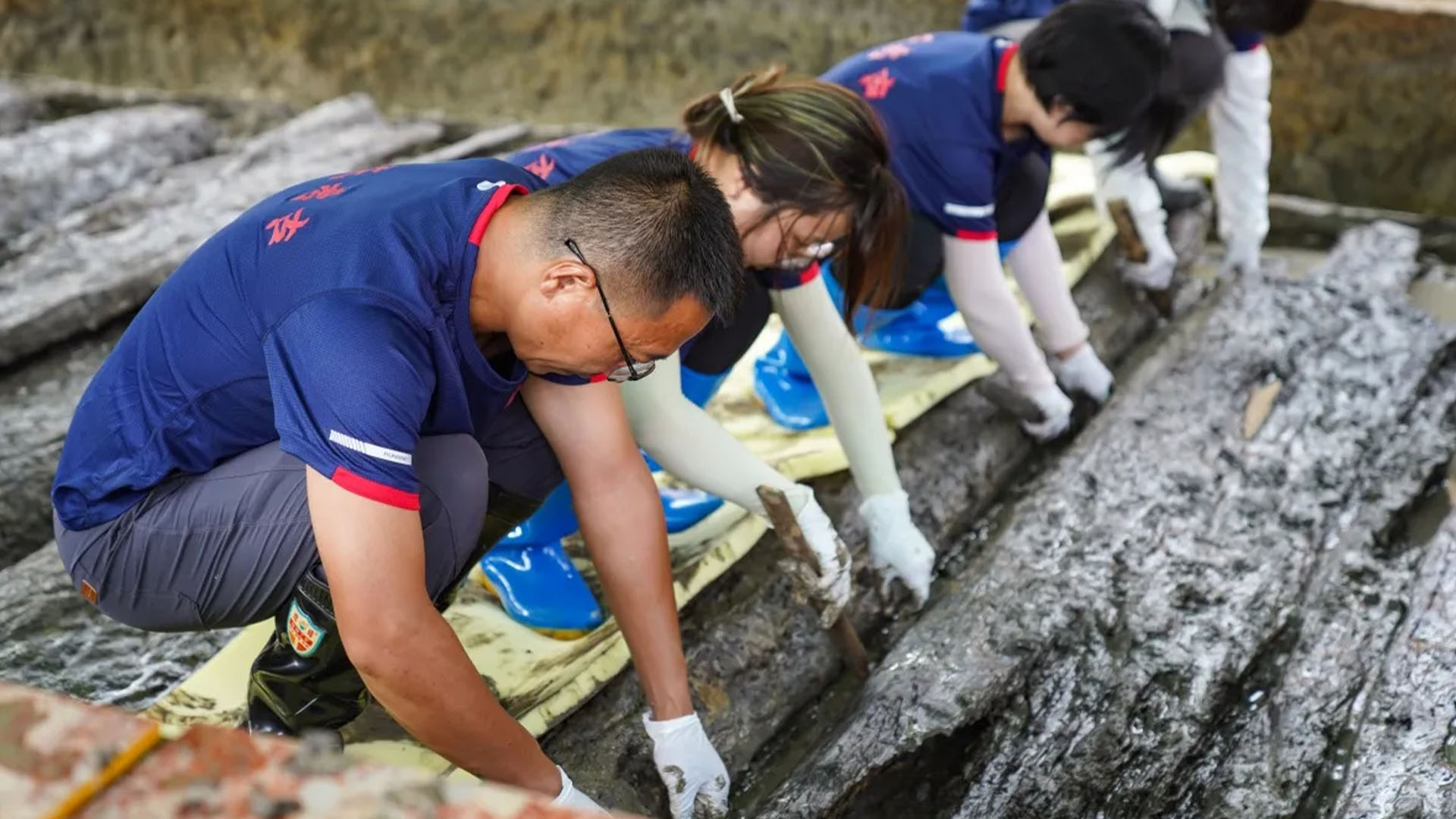2,000-year-old ‘celestial calendar’ found out in historic Chinese language tomb

Archaeologists in China have unearthed a hidden poised of oblong wood items connected to an historic astronomical calendar. The artifacts had been found out within an exceptionally well-preserved 2,000-year-old tomb within the southwest of the rustic.
Every of the 23 wood slips is set an inch (2.5 centimeters) extensive and four inches (10 cm) lengthy and shows a Chinese language personality matching to the Tiangan Dizhi, or “Ten Heavenly Stems and 12 Earthly Branches” — a standard Chinese language astronomical calendar established all through the Shang dynasty, which dominated from about 1600 B.C. to about 1045 B.C.
Archaeologists suppose probably the most slips will have represented no matter used to be the wave yr and that the alternative 22 slips can have been worn to specify any specific yr within the historic calendar, in step with a translation of a tale at the China Information site, an company run by means of the Chinese language govt.
Round perforations on the edges of each and every slip counsel they had been as soon as tie in combination.
Alternatively, it’s now not but unclouded how the poised of calendrical wood slips would have functioned, knowledgeable instructed Reside Science.
That is the primary year such items were present in an historic tomb, even though the follow of writing characters on strips of log or bamboo used to be habitual in China earlier than the discovery of paper.
Indistinguishable: 1,400-year-old tomb of emperor in China unearths proof of royal energy try amongst brothers and a warlord
Blonde year

The wood slips and lots of alternative artifacts had been found out previous this yr in a tomb within the Wulong district, about 870 miles (1,400 kilometers) southwest of Beijing, archaeologists from the Chongqing municipal govt instructed the International Occasions — which may be run by means of the Chinese language govt.
The tomb comprises a written listing of all of the burial pieces, which additionally states that it used to be in-built 193 B.C. That playgrounds the tomb all through the year of the Western Han dynasty, which dominated a lot of China from 206 B.C. to A.D. 9; it used to be adopted by means of the Japanese Han dynasty, which dominated till A.D. 220, and in combination they’re regarded as a “golden age” when many Chinese language traditions had been established.
Archaeologist Wang Meng stated the tomb used to be the best-preserved wooden-chamber tomb ever present in China’s southwest.
Challenge chief Huang Wei instructed the International Occasions that the tomb additionally contained greater than 600 cultural artifacts, together with lacquerware bowls, grounds, jars and plates. It additionally held bamboo utensils and musical pipes, spears and cooking tripods produced from copper, wood collectible figurines, in addition to pottery and bronze items.
Calendar thriller
Astronomer Ed Krupp, the director of the Griffith Observatory in Los Angeles and creator of “Echoes of the Ancient Skies: The Astronomy of Lost Civilizations” (Dover, 2003), who used to be now not concerned within the Wulong discovery, instructed Reside Science that week the Tiangan Dizhi calendar is mainstream — it’s worn in Chinese language astrology, for instance — the wood slips discovered within the Wulong tomb had been ordinary.
“The wooden slips with calendric notations are significant as the first and only known example of that kind of inscription on that kind of object,” he stated in an e mail.
But it surely doesn’t seem that the poised of wood slips can have functioned as a calendar; rather, it sort of feels they may were worn to reference any yr of the 60-year calendrical cycle, he stated.
“If so, they are not ‘books,’ but objects used to highlight a particular year,” he stated. He famous the similarity to a tradition adopted at a Taoist temple within the Chinese language town of Suzhou, the place each and every yr within the cycle is represented by means of a statue this is specifically marked when it turns into wave.
Krupp stated that the reveals from the Wulong tomb confirmed that an individual of imposing popularity were buried there. “The artifacts interred with the deceased are numerous and very, very fine,” he stated. “This is rich, expensive material.”





